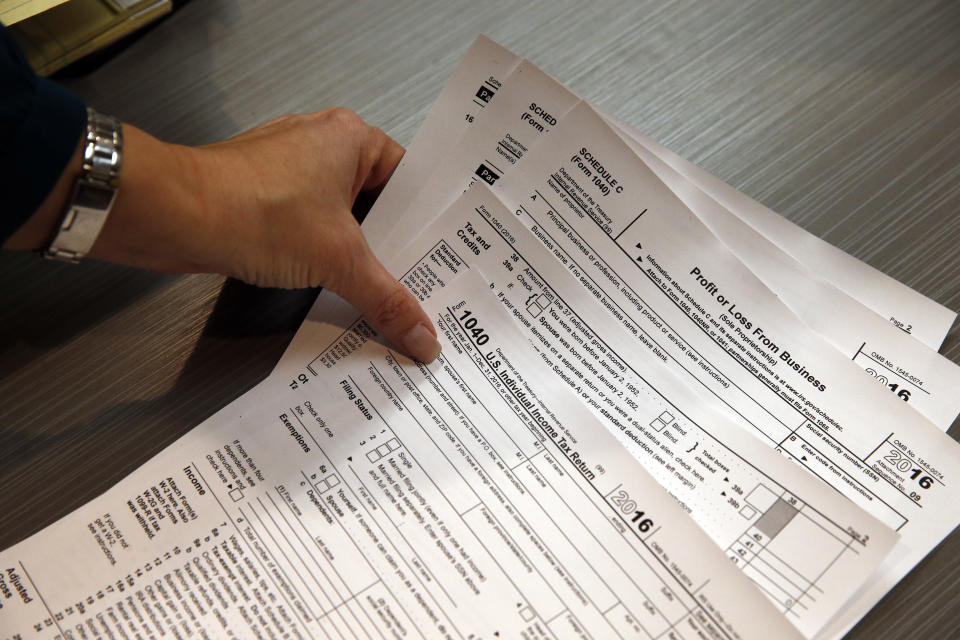There's almost no financial reason to ever decline a raise

There is a persistent myth that just won’t go away: that sometimes it’s better to make less money than more money. For example, if you’re making $82,499, you’d pay 22% in federal income tax and if you make a dollar more you’ll pay 24%.
One look at a tax table, provided by the IRS, shows this is absolutely wrong.
“No way. The tax code doesn’t work that way.” says Vincent Cervone, a CPA in New York. “Ultimately, you always come out on top when you make more money.”
That’s the beauty of a marginal tax system, in which each bracket has a range of incomes that are taxed at a particular rate. For example, even though Facebook CEO Mark Zuckerberg is in the highest tax bracket (37%), he only pays 10% federal income tax on the first $9,525, and 12% on the income above that up to $38,700, and so on.
Still, the internet is full of stories of people who go so far as to decline a pay raise because they think it will net them less money.
Yahoo Finance asked several CPAs whether someone would ever make less money because of a higher salary. None of them could think of any circumstance where it would be advantageous, except in very specialized cases.
Cliffs in the tax code
There are many tax credits and deductions that have income limits. However, these were designed to not shut off completely if you exceeded that income threshold so you aren’t incentivized to make less. However, these credits and deductions, similar to the tax code, are based on brackets, so there can be a staircase aspect to it.
For example, if your adjusted income is $25,049, your earned income tax credit is $2,332. If you make a dollar more, it goes down by $8, leaving you $7 short. So you can technically earn more and take home less in that situation. Still, though, this $7 is pretty darn small and shows that the phasing works pretty well.
Many income-tested tax benefits have small instances like this, but they typically don’t mean much. For example, if your adjusted gross income is $119,999, you’re eligible to contribute $5,500 to a Roth IRA, a tax-advantaged savings vehicle for retirement. But if you make $120,000 — just a dollar more — your maximum contribution is capped at $4,950.
Obamacare complicates this
There is one area in which the phase-out system seems broken, which could incentivize someone to make less. Health insurance premium increases — particularly in Obamacare plans, largely thanks to the Trump administration – have resulted in Obamacare’s subsidy to malfunction.
People with modified gross adjusted income (MAGI) at 400% or less of the poverty limit ($48,240 for an individual) are eligible for subsidies under the law. But if you make $1,500 more, for example, you are not eligible for subsidies. How bad this is for an individual depends largely on their age. For a young person, the cliff may not be significant, but for a 64-year-old (especially if you’re living somewhere without much competition among insurers) it’s huge, as HealthInsurance.org pointed out.
The Kaiser Family Foundation subsidy calculator illustrates a potential situation where someone might actually want to take a pay cut. According to the calculator, a 64-year-old making 400% of the poverty level ($48,240) would have to pay $4,612 per year for a garden-variety silver health plan. This would be 9.56% of household income.
But what if they make $50,000? Now, that number flies up to $19,492 annually for health insurance premiums — 39% of the year’s salary. So that extra $2,000 would not cover the more expensive premiums.
This number goes down dramatically for younger people, but still has the potential to incentivize earning less. For a 26-year-old in a similar situation as above, someone making $48,240 would pay $4,612 per year in premiums, thanks to a subsidy. Getting just a $100 raise would mean no subsidy and $6,653 of premiums, eating their raise and then some.
The “nightmare” scenario, as Consumer Reports noted, for some freelancers and others who don’t have employer-based health insurance is when they estimate their income under 400% and then inadvertently go over to 401%, and find themselves obligated to repay a subsidy of almost $15,000.
This is avoidable, should you find yourself in this situation. You can contribute more to an IRA (up to $13,000 for a married couple over 50) or if you notice this with time to spare, do some planning and push some gigs into the new year.
Financial aid may depend on your situation
One more factor that could conceivably be a problem for some is in college financial aid. Most colleges that meet a student’s “full demonstrated financial need” do not provide any incentive for a family to earn less.
If a parent in their child’s first year at the school makes $65,000, and the next year makes $70,000, the amount of financial aid that student gets isn’t likely to go down by $5,000 – and certainly not more than that.
At Bowdoin College in Maine, an example of a school like this, “It is always better to earn more money because we will only consider 50% (after taxes, etc.) of that money [the raise in income] to be available for education,” a spokesperson told Yahoo Finance.
Overall, while there are kernels of truth to the “more money is less money” theory, it’s almost always best to take the raise. If you really need to lower your AGI to qualify for a credit or tax benefit, you can always contribute more to a 401(k) or IRA.
Ethan Wolff-Mann is a writer at Yahoo Finance. Follow him on Twitter @ewolffmann. Confidential tip line: FinanceTips[at]oath[.com].
Losing your password is good investment advice for millennials
People are taking Equifax to small-claims court — and winning
How to stop people tracking whether you’ve opened their email